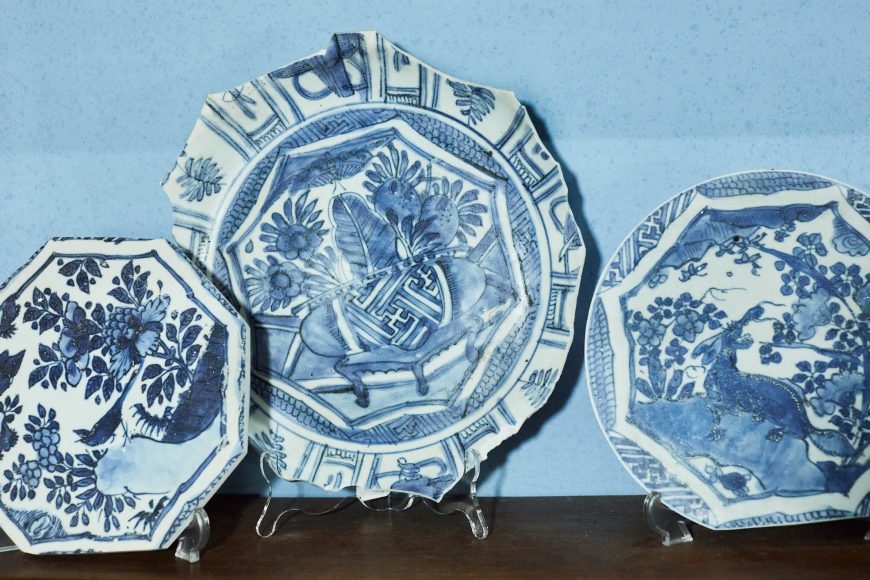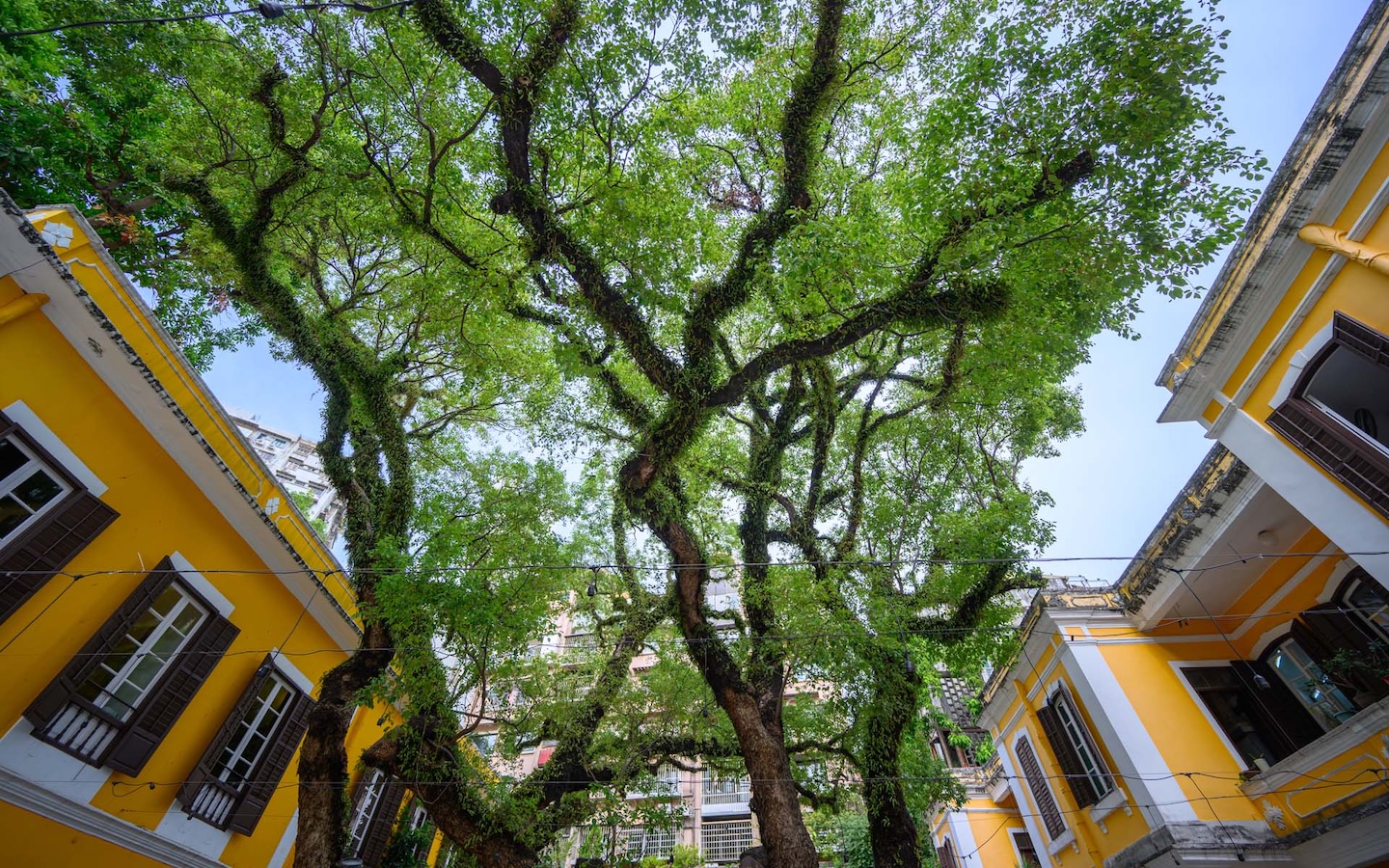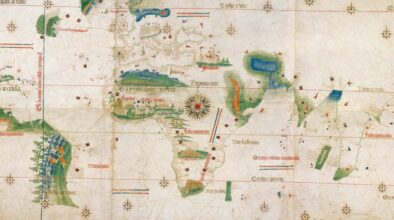Thirty years ago, it seemed unlikely that an Australian health worker named Ben Rongen would find himself in possession of four tonnes of 17th-century Chinese porcelain. But a serendipitous series of decisions made it happen.
In 1994, in his late thirties, Rongen moved from Sydney to Malaysia. He changed his career and found work as a videographer – shooting ads for big corporations. “But after a few years I got bored with all the Brylcreem and cat food commercials,” Rongen tells Macao magazine. “I wanted to do something substantial… I wanted to make a documentary.”
That’s when he heard about the veteran marine archeologist Sten Sjostrand, a Swede scouring the South China Sea for shipwrecks. It wasn’t such a far-fetched mission: trade routes have traversed this part of the planet for millennia, providing ample opportunity for storms, skirmishes, and skullduggerous pirates to down ships. Unlucky vessels might hail from China, Portugal, Japan and elsewhere, sinking along with their often very valuable cargo – the likes of solid gold ingots, spices and silks, tea and ceramics. Some of these goods fare better underwater than others, obviously, China’s fine porcelain being an example. That is what Sjostrand specifically hoped to find, and he wanted a videographer to help document his efforts. When Rongen was offered this opportunity, he seized it.
Sjostrand had excavated nine Chinese shipwrecks by the time Rongen joined his crew in 2002, but none had carried his holy grail. A Malaysian fisherman had recently tipped him off about an eighth, however, having noticed some broken pieces of blue and white ceramics caught up in his nets. As Rongen puts it, “Word had gotten out long ago that when that sort of thing happens, you call up this Swedish guy and he’ll pay good money for any information he can use to locate a wreck.”
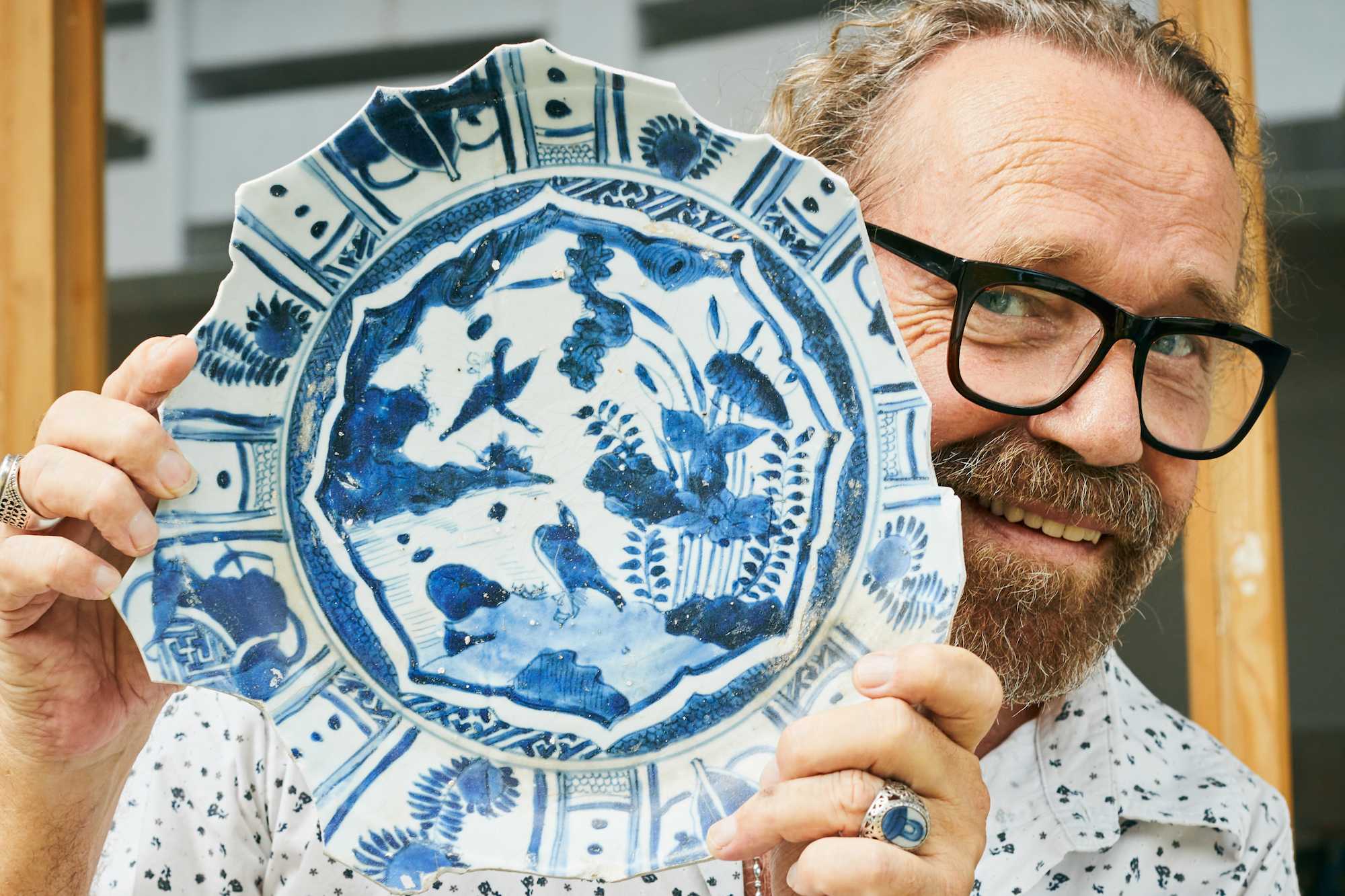
‘That sort of thing’, Rongen explains, indicates a trawler has dragged its weighted net over a ship’s salty grave – shaving what can be centuries-old debris off the seabed along the way. The unusual nature of this debris implied that the ship was most likely a Portuguese merchant vessel, downed in the course of transporting Chinese porcelain from Macao to Europe during the 16th or 17th century.
Macao, of course, was Portugal’s East-Asian trading post in China between the 16th and 20th centuries; it’s where Chinese exports were loaded into the empire’s ships bound for Europe. In those days, porcelain reached Macao via rivers. It is almost certain, Rongen says, that any Portuguese ship laden with this high-quality ceramic had spent time in Macao’s famous shipyards before setting sail for Lisbon, likely via Portuguese Malacca and India.
The Wanli shipwreck
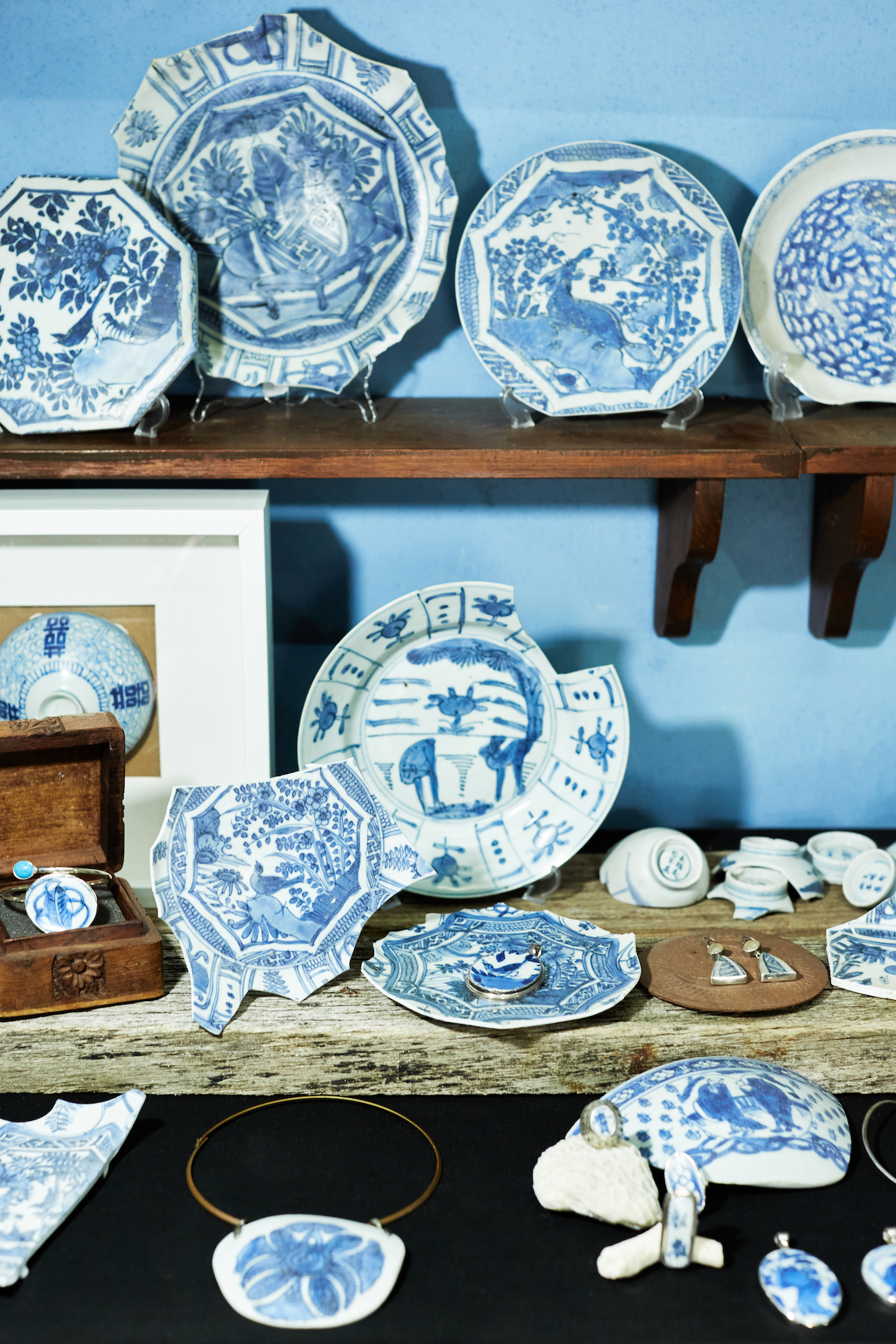
According to the fisherman’s report, the ship in question hadn’t made it very far from Macao – it appeared to have sunk about 10 kilometres off the east coast of today’s Malaysia. To find it, Sjostrand’s team slowly criss-crossed an area of ocean using a side-scan sonar device to pick up anomalies on the seafloor. They then donned scuba gear to investigate the anomalies in person.
What they sought was not what you might imagine. Unlike the steel-hulled Titanic, ships built back then were wooden. Their timber rots underwater. Ocean currents (and trawlers) eventually erase all traces of what were once stately, multi-masted vessels; what’s left is a pile of inorganic objects that may be completely buried in sand.
Fortunately, in this case, a sizable haul of blue and white plates and bowls were visibly scattered across the seafloor. Rongen learned how to dive down to 40 metres in order to film them lying there, just as they had for hundreds of years. “Seeing it all for the first time was just a totally incredible feeling,” the 67-year-old says. “I was hooked.”
Carbon dating and thermoluminescent analysis has since shown that the ship sank in 1625. It also identified the ship’s cargo as ‘kraak ware’ from the town of Jingdezhen, in northern Jiangxi Province. Kraak ware is a type of blue and white porcelain produced specifically for export; the word ‘kraak’ is likely derived from ‘carrack’ (the merchant vessels favoured by Portuguese sailors at the time). While this particular carrack’s original name is not known, she was posthumously re-christened the Wanli – after the Ming dynasty emperor.
Porcelain: a superior secret
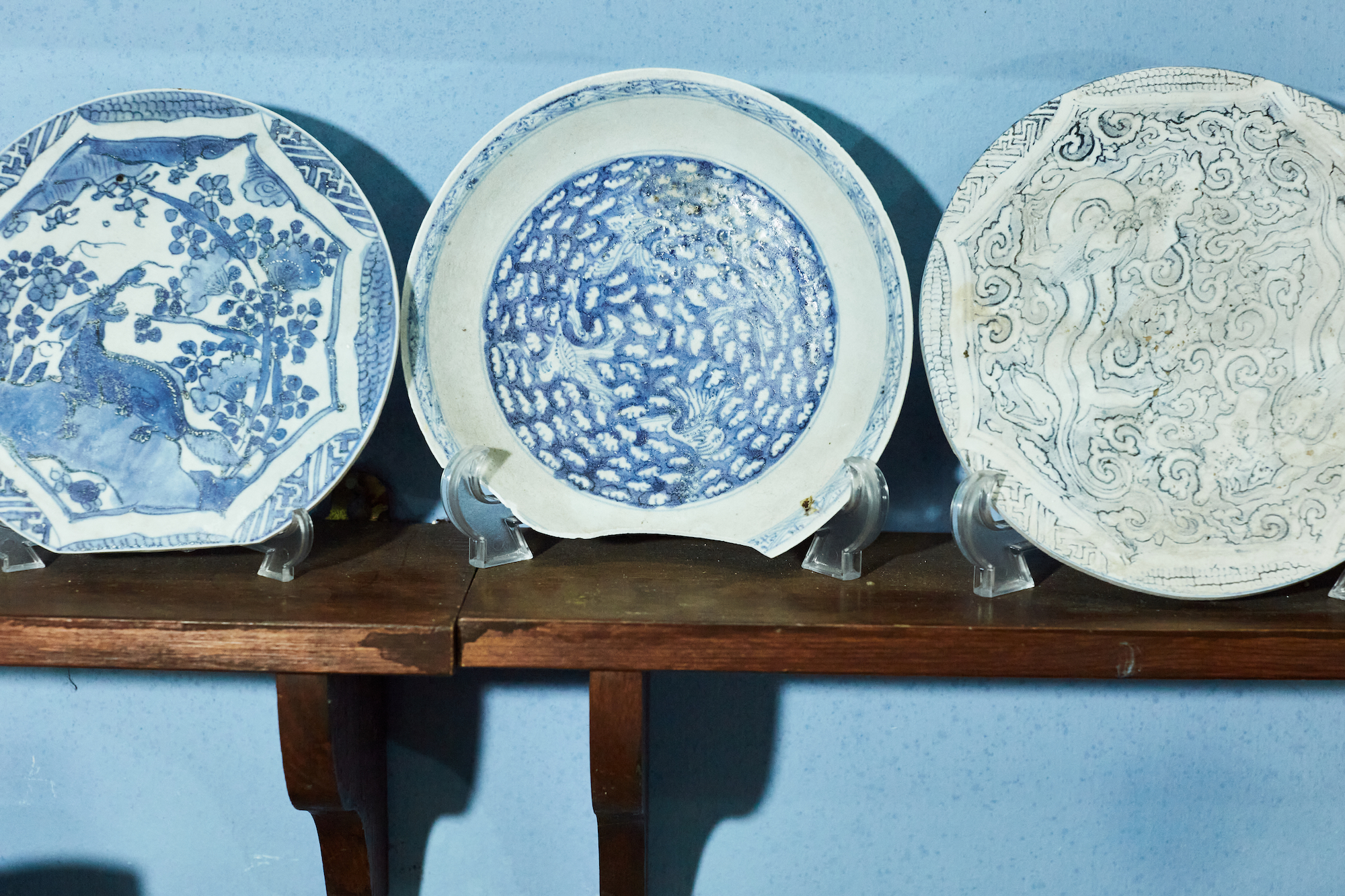
Europe’s love affair with porcelain began a few decades before the Wanli sank. Locally made pottery could not hold a candle to how fine and yet how durable this Chinese innovation was. Its glass-like finish, stark colours, and oriental motifs were all sources of fascination. Consequently, kraak ware was both a highly prized status symbol for Europeans and a lucrative export for China (though the country was known to keep the best quality stuff for itself). A German alchemist finally figured out how to make porcelain in the 1700s (it gets fired at very, very high temperatures). Until then, Europe relied on Asia for its supply.
The Dutch were especially fond of kraak ware, says Rongen. You can even spy kraak ware bowls and vases in still lifes by 17th-century Dutch masters. The Dutch East India Company had a habit of capturing Portuguese vessels as they headed home from Macao – seizing any blue and white porcelain for themselves. The Wanli, however, appears to have been caught up in a different altercation between the two empires: their drawn-out fight over Malacca, which also saw the Dutch unsuccessfully attempt to take Macao. It seems that the Dutch attacked the ship as it made its way past Malacca, then a Portuguese territory, sending her and her precious cargo to the bottom of the South China Sea.
According to Rongen, records indicate Portugal lost 180 ships during the decades it was at war with Holland. “So far, we’ve only found one of those wrecks,” Rongen says. “There’s 179 more lying out there somewhere.”
But it’s incredibly difficult to locate old shipwrecks. For any chance at success, Rongen says you need huge amounts of oceanic knowledge, perseverance, and money. Sjostrand happened to have all three in spades, along with a passion for Asian ceramics. And so, aptly armed, he founded and financed Nanhai Marine Archeology – a company dedicated to finding and excavating historical shipwrecks in the South China Sea.
Excavating the Wanli

Excavating the wreck took 12 months in total, spread across three years. Professional scuba divers carried it out, square metre by square metre. They meticulously unearthed the ship’s keel – preserved beneath sandy mud – along with the tonnes of kraak ware buried with it. The divers loaded every scrap of porcelain into baskets to be hauled up to the so-called recovery boat, anchored above the excavation site.
That’s where Rongen was poised with his camera. “To sit on that ship and wait for the baskets to be hoisted up, that was the really exciting bit,” he recalls. “I’ve got Sten sitting there next to me, going, ‘Oh my God, look at this! Oh my God, we’ve never seen this before!’ He became my teacher.”
There was solemnity to the recovery, too. Rongen says he and the crew were keenly aware they were working on a grave site. Many people would have drowned when the Wanli sank, and the divers excavated human bones as well as porcelain.
All in all, more than nine tonnes of kraak ware was brought up to the recovery boat. That included about 7,000 pieces now officially registered with the National Museum of Malaysia as artefacts (these were more than 50 percent intact). Of those, fewer than 2,000 pieces were fully intact. The bulk of the haul was broken or fragmented pieces of porcelain, known as shards. Porcelain survives remarkably well under water and even better when buried in sand, due to its density. But some pieces were in better condition than others, with much of the damage being caused by fire that consumed the ship during the Dutch attack. Other registrable artefacts hauled up included brass candle holders, a few small cannons, and an earthenware crucifix.
“All those one-off [non-kraak ware] pieces are in Malaysia’s National Museum,” says Rongen. The museum actually owns 30 percent of anything brought up from wrecks Nanhai Marine Archaeology finds in Malaysian waters, a deal Sjostrand – who passed away two years ago – did to secure salvage rights. As a result, Rongen says, the country has a lot of kraak ware in storage.
Most of the remaining artefacts have since returned to their country of origin, snapped up by Chinese institutions such as Guangdong’s Maritime Silk Road Museum. “Sten was very happy with that outcome,” Rongen says. “One, the stuff was going into museums to be treasured and loved and appreciated. Two, of course, he received top dollar.”
What to do with four tonnes of smashed ceramics?
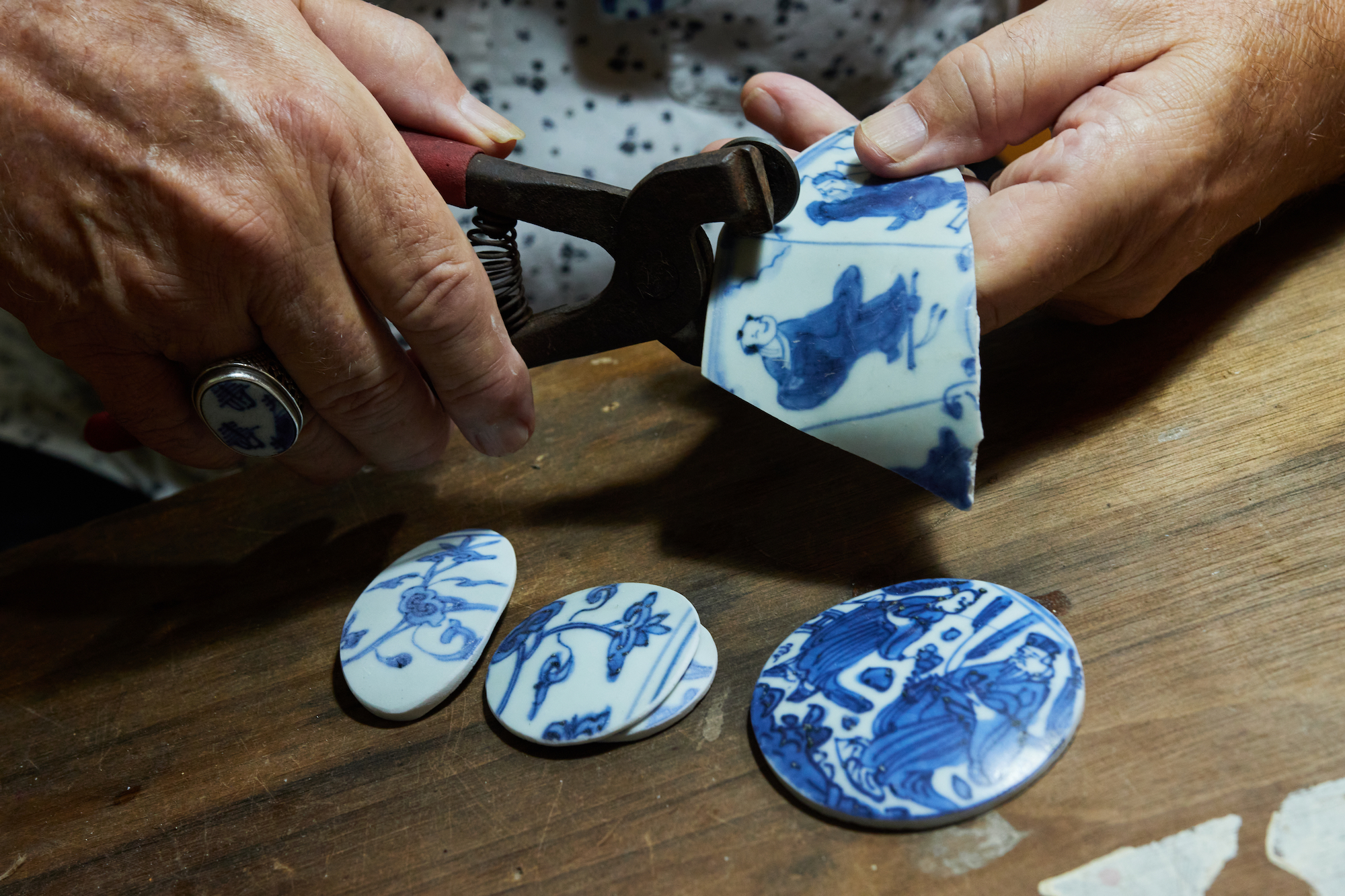
While artefacts from the Wanli were in hot demand, the shards of blue and white porcelain were not. “Proper treasure hunters wouldn’t even have brought that stuff up,” says Rongen. “But on Sten’s insistence, we took everything. That’s the archeologist in him.”
To Rongen’s eyes, however, the shards were exquisite. “It was all just so beautiful, painted with immortals and dragons with pearls in their mouths, phoenixes and all sorts of interesting things,” he describes. The filmmaker ended up buying four tonnes of shard from Nanhai Marine Archaeology as a bulk lot. Rongen also bought, separately, a fair few intact bases of broken plates – where the edges had broken away but the central ‘medallion’ remained in all its glory. These could be 35 centimetres across; “just like beautiful, 400-year-old paintings,” he says.
People thought he was crazy to spend money on what was, essentially, a mountain of smashed ceramics. But while Rongen won’t name figures, he says he’s “well and truly recouped” his costs. Over the years, Chinese universities and museums have bought up most of the mountain. They use the fragments for research as well as display purposes, according to Rongen. He also started turning attractive pieces of the blue and white porcelain – shards painted with an intact chrysanthemum or deer, for example – into pendants, earrings, brooches and rings. These are now sold under his label, Kraak Creations.
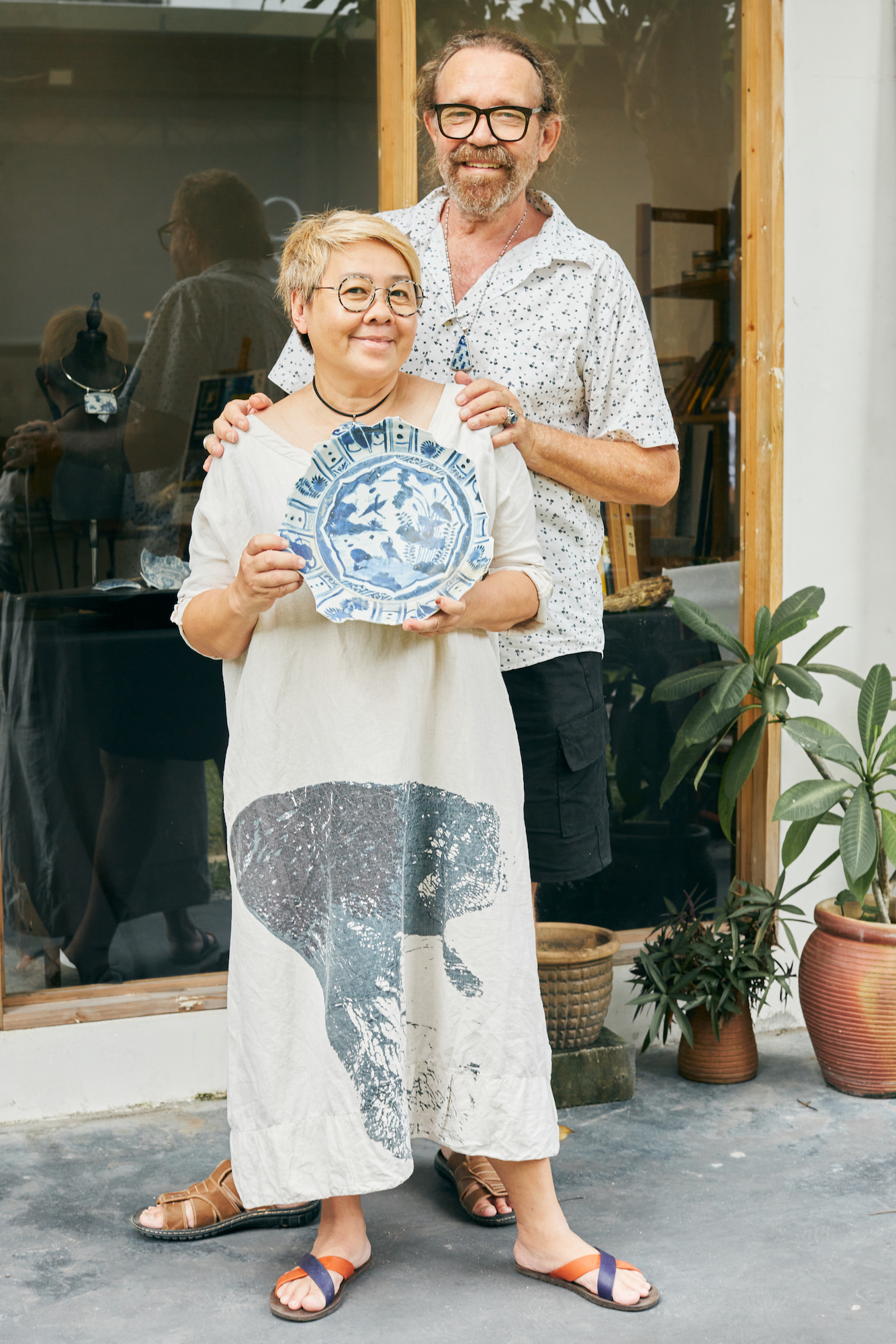
Rongen taught himself how to make jewellery in 2007, grinding down the rough ceramic edges and working with a silversmith. “I started making bits of jewellery and people liked it, then I sold a few, and all of a sudden it’s 17 years’ later,” he says. Rongen’s grinding wheel is located out the back of his garden, at the home he shares with his wife, Joan, in Penang. The novelty of working with kraak ware has not worn off. “It’s that feeling of history it conveys,” Rongen enthuses. “The fact human hands in China were painting this very piece of pottery with cobalt blue at exactly the same time Rembrandt was sitting in Holland, painting the Night Watch.”
Kraak Creations sells its wares via a number of consignment stores, as well as from its own little shop in Penang – shared with a craftsman using traditional methods to make joss sticks. This tickles Rongen, who enjoys peddling his porcelain next to a product that was also made during the Ming period. Portuguese carracks carrying kraak ware surely crossed paths with Chinese ships laden with the aromatic sandalwood used to make incense, he says. It’s not unlikely they met in Macao.
While the Nanhai Marine Archaeology team (which Rongen remains a part of) hasn’t recovered any wrecks since the Wanli, Rongen holds hope that will change. “Sten’s passion was to build a chronology of shipwrecks, showing maritime trade over a thousand years,” he says. “The aim is to continue his legacy, to search for and salvage more shipwrecks.”
Rongen also plans to get remaining Wanli artefacts into more museums around the world, including in Portugal and Macao – places indelibly connected to the carrack and its kraak ware’s fate.
